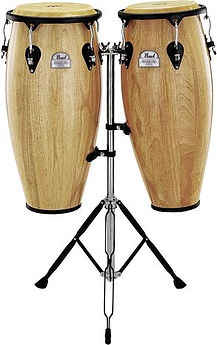Music To Your Ears
website on band instruments
Conga
General info:
The conga is a tall, narrow, single-headed African drum. They are used in the Carnaval rhythm called conga (or conga de comprasa), and is the principal instrument in rumba. They are usually played in sets of two to four with the fingers and palms of the hand. Typical congas stand approximately 75 centimetres from the bottom of the shell to the head. It can be played both seated or standing.
History:
The conga drum originates from Africa. The name conga is probably derived from the name of its origin country, the Congolaise of Africa. Nonetheless, the Conga is also called the Tumbadora. The conga is a descendant of a conical shaped drum of “Makuta”.
The conga has gone through several changes in form and materials since it was originally created. Today's congas are more rounded than its conical ancestor. The conga was originally made from wood, but is available today in fiberglass as well. Conga heads were originally made from rawhide. Rawhide is still the most popular material for heads, but today, synthetic heads, made of plastics & other materials, are also available.
Range:
N.A.
Role:
N.A
Congas are now very common in Latin music, including salsa music, merengue music and reggae, as well as many other forms of popular music.
Foreign names:
Tumba ---- German
Conga ---- French
Tumba ---- Italian
Famous pieces:
N.A
